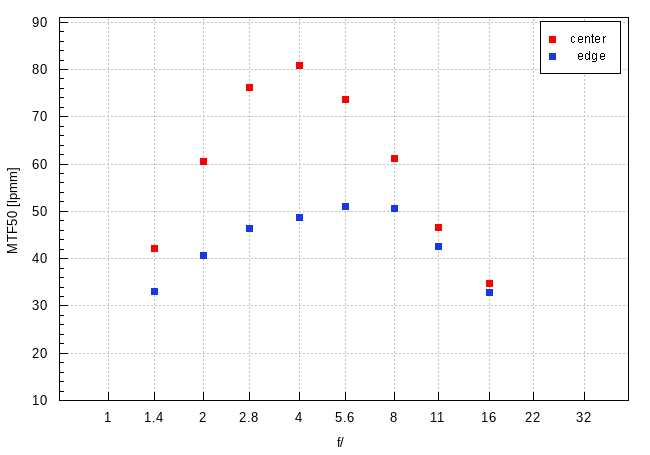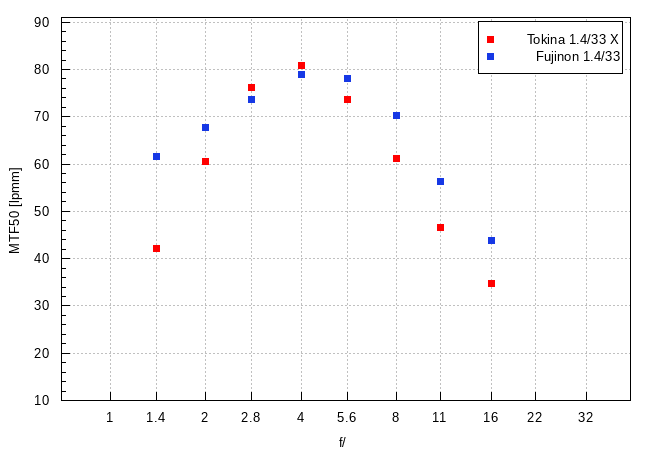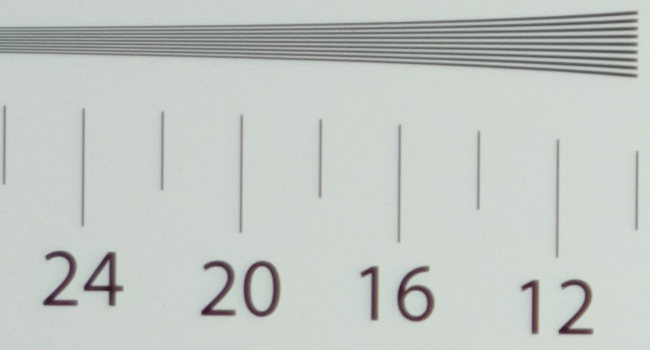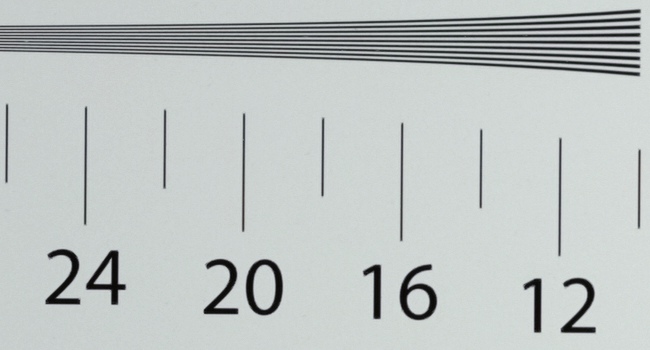Tokina ATX-M 33 mm f/1.4 X
4. Image resolution
Let's remind here that the best fixed focal length Fujifilm X lenses, tested that way, are able to reach as high as 80 lpmm and the decency level is set near 44-45 lpmm. The resolution record for this sensor amounts to 85 lpmm and higher; the best results so far belong to the Viltrox AF 23 mm f/1.4 XF - that lens was able to get to 85.3 ±0.9 lpmm- and the Fujinon XF 18 mm f/1.4 R WR (93.5 ±0.9 lpmm). Let's check how the Tokina ATX-M 33 mm f/1.4 X compares in the frame centre and on its edge – an appropriate graph you can find below.

Please Support UsIf you enjoy our reviews and articles, and you want us to continue our work please, support our website by donating through PayPal. The funds are going to be used for paying our editorial team, renting servers, and equipping our testing studio; only that way we will be able to continue providing you interesting content for free. |
- - - - - - - - - - - - - - - - - - - - - - - - - - - - - - - - - - - - - - - - - - - - - - - -
You see at once that the maximum relative aperture is a problem here as the resolution reaches only 42 lpmm, a bit below the decency level. Stopping down the aperture improves the situation quickly - by f/2.0 the lens exceeds 60 lpmm and by f/2.8 it reaches as high as 76 lpmm. By f/4.0 you deal with a very good result, exceeding 80 lpmm.
Where's the problem? Such a performance is typical for old double Gauss lenses. Their maximum relative aperture also usually balances on the brink of the decency level and on stopping down their performance improves very quickly. Still, what is appropriate and good for an older construction with 6-7 elements doesn't suit a modern lens with 10 optical elements inside.
What's interesting, the Tokina's performance on the edge of the frame also reminds us more of an older construction than a good contemporary lens. Problems with sharp images you can observe not only by f/1.4 but also by f/2.0; the decency level is reached only near f/2.8. The maximum resolution value also fails to impress- the lens is able to reach just over 50 lpmm.
Not so long ago we tested a Fujinon with parameters identical to these of the Tokina so now we would like to compare the performance of both these instruments. Just look at the graph below.

Near f/2.8-f/5.6 apertures both lenses differ just slightly; however, near the maximum relative aperture the Fujinon distinctly prevails. Also on stopping down the aperture the Tokina fares much weaker than the Fujinon but it seems to be caused by the construction of the aperture or its ring. We don't think it's a result of optics of the lens. After all a clickless regulation means you don't know an exact position of an aperture value and you set it a bit 'by eye'; as a result, instead of, say, f/11 you can set something closer to e.g. f/13.
Traditionally, at the end of this chapter we present crops taken out of images of our resolution testing chart, saved as JPEG files along RAW files which were used for the analysis above.
| Fujifilm X-T2, JPEG, f/1.4 |
 |
| Fujifilm X-T2, JPEG, f/4.0 |
 |






